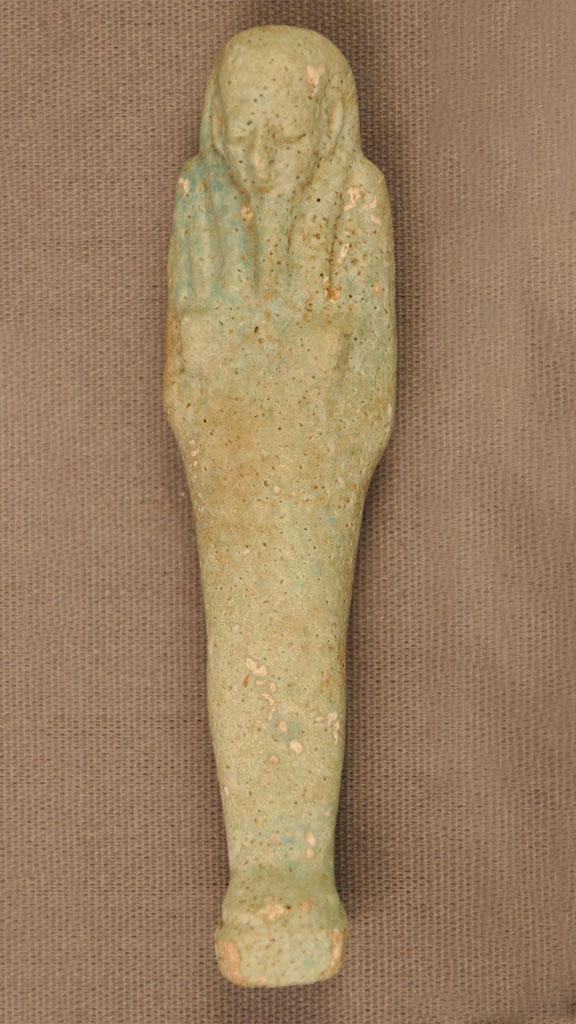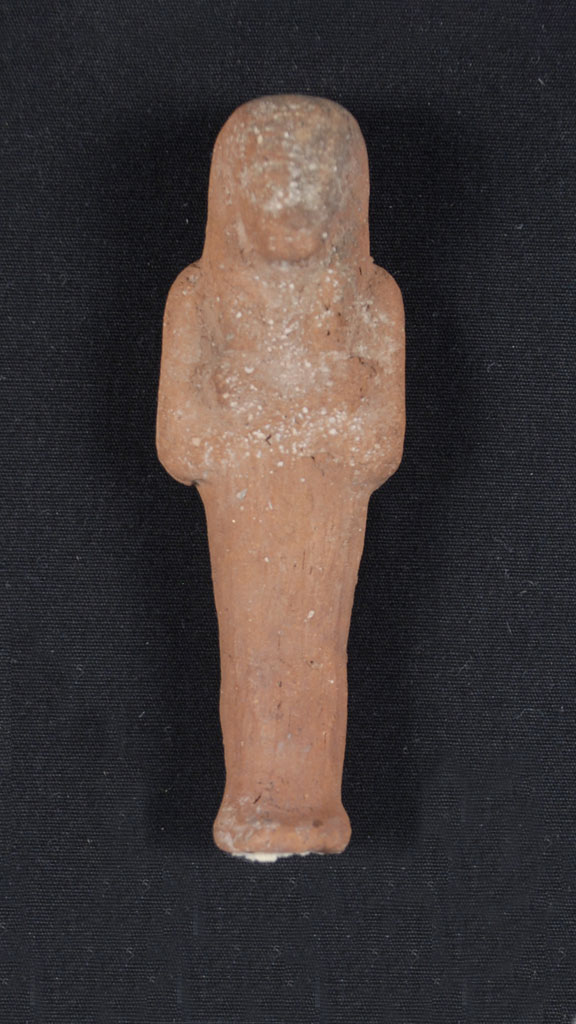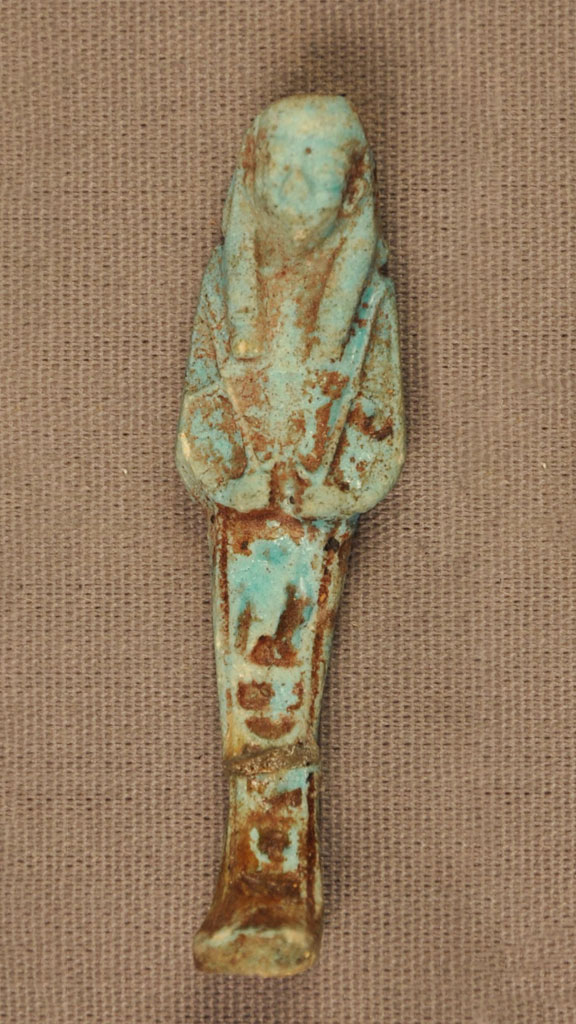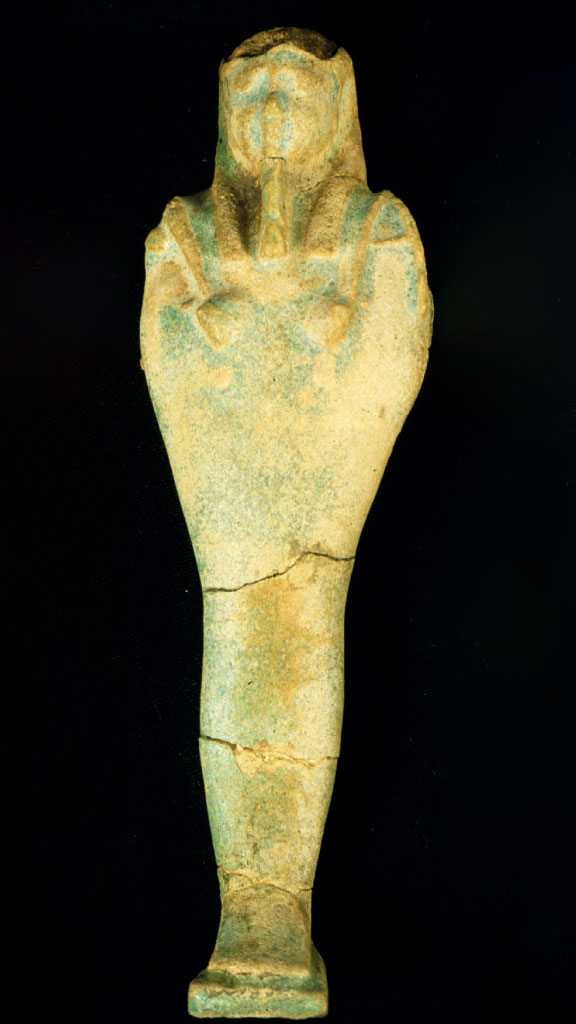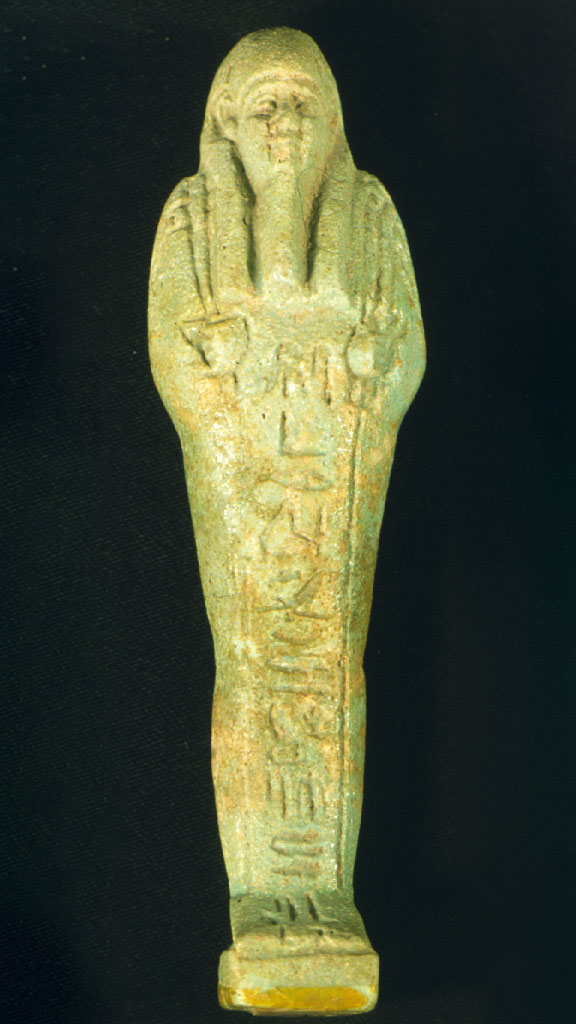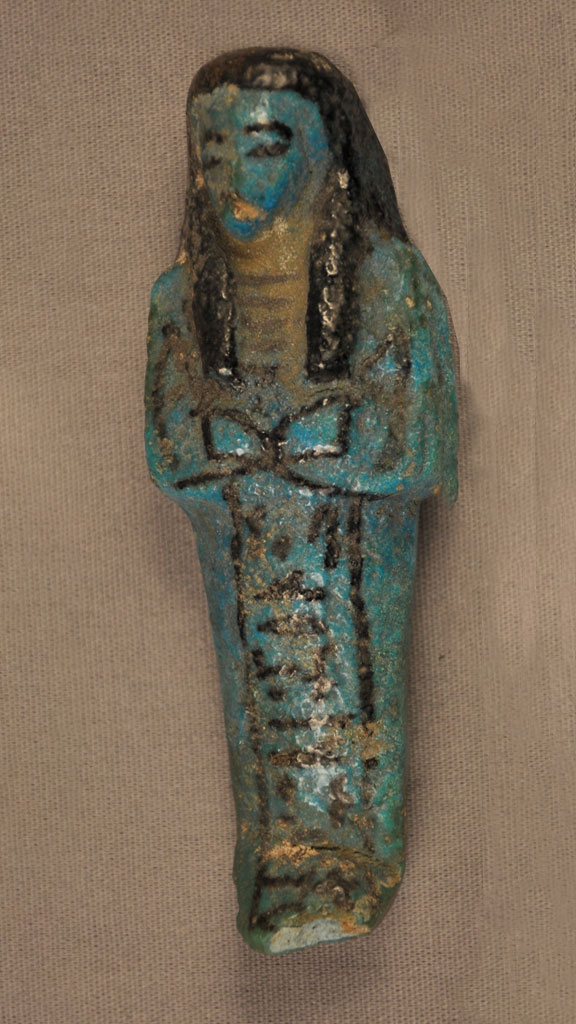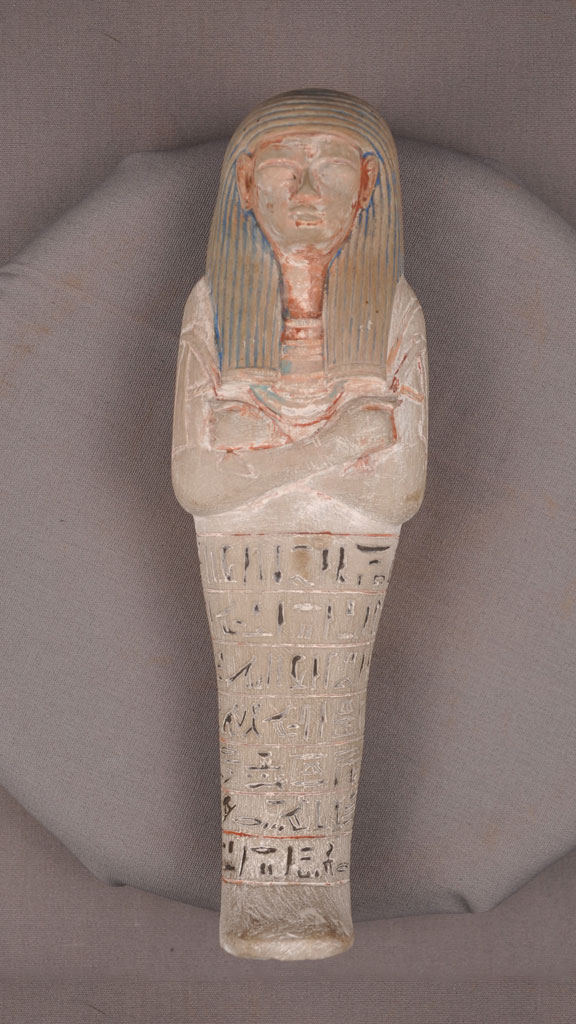Egyptian Mummification

Artifacts
Shabtis
Even in the afterlife the deceased had work to do. To avoid these chores, shabtis, small, model servants, were placed in the tombs. The earliest shabtis come from the Middle Kingdom. These figures were mummiform in shape, made of wood or wax, and often placed in model wooden coffins. The more elaborate New Kingdom shabtis were made of wood, metal, stone, or faience. The figures were often inscribed with a magical text that ensured their performance. Since much of the required labor was in the fields, most shabtis are depicted carrying hoes, mattocks, and baskets. At first only one shabti was placed in each tomb. By the New Kingdom, though, tombs included large work gangs of shabtis with their own overseers. Though their quality varied over time, shabtis were used to the end of the Dynastic period.
"O shabti, allotted to me, if I be summoned or if I be detailed to do any work which has to be done in the realm of the dead: if indeed obstacles are implanted for you therewith as a man at his duties, you shall detail yourself for me on every occasion of making arable the fields, of flooding the banks or of conveying sand from east to west; 'Here am I,' you shall say." Spell 6 - The Book of the Dead
